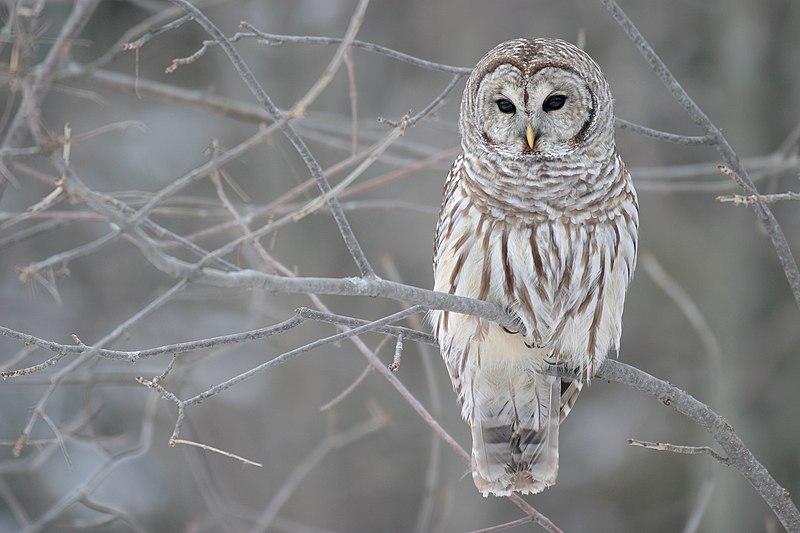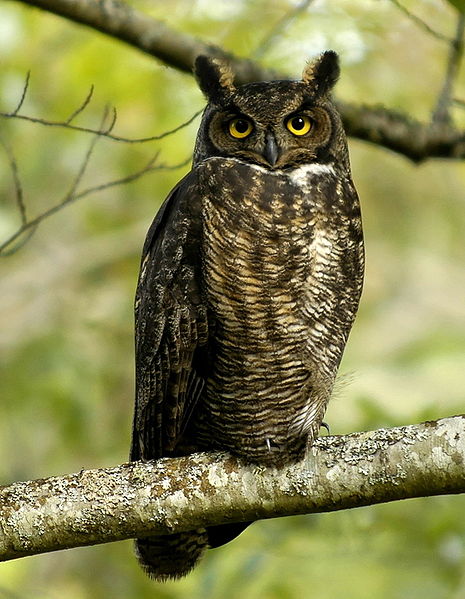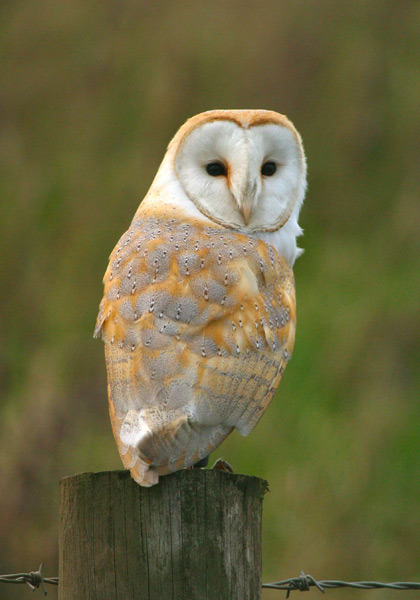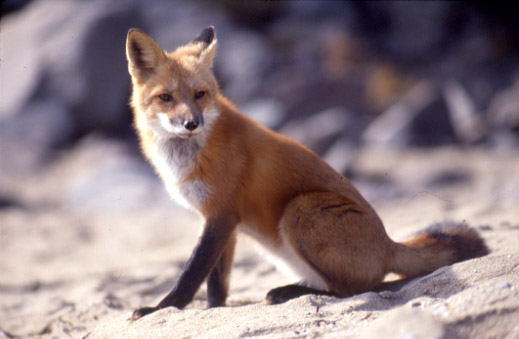A spooky Halloween story or chilling thriller film is incomplete without the appropriate array of creepy nighttime animal sounds. Unfortunately, many an evening stroll has been transformed into a terrifying, heart-pounding experience thanks to these bloodcurdling calls. In fact, we can encounter a variety of these sounds right here in the Pacific Northwest! And because we only fear what we don't understand, here is a brief guide to the spookiest of our local animal sounds to help you learn more about these relatively harmless creatures.
Barred Owl - Strix varia L: 21"
Common, year-round resident of the Puget Sound region. Often found in mixed coniferous-deciduous forests and seen during daytime hours near roosts. Calls include very loud hooting/barking, often described as monkey-like sounds. Individuals may also hiss or cackle.
Listen
Boreal Owl - Aegolius funereus L: 10"
Uncommonly seen inhabitant of montane forests in Eastern Washington. Found in mixed coniferous-deciduous northern forests. Call is a series of low, piping hoots that rise and fall in pitch and intensity. Also gives a low, nasal hooAh as well as short screeches.
Listen
Great Horned Owl - Bubo virginianus L: 22"
Fairly common and widespread, inhabiting a variety of habitats including forests, deserts, tundra, and urban areas. Often seen perched at dusk or mobbed by small birds in the daytime. Call is an iconic series of rhythmic hoots associated with most midwinter forest settings.
Listen
Western Screech-owl - Megascops kennicottii L: 8.5"
Common in wooded to sparsely wooded areas including urban parks, native woodland, and deserts. Generally roosts in very dense, dark areas and is difficult to see in the daytime. Call is a series of accelerating, abrupt whistled hoots that ends slightly lower in pitch.
Listen
(Can you hear the coyote in the background?)
Barn Owl - Tyto alba L: 16"
Extremely widespread species common to Western Washington. Prefers open grassland habitat and roosts in cavities or human-made structures. Populations may be in decline. These birds do not "hoot" like other owls. Calls generally only a shrieking screech. Very commonly thought to be a frightening, ghostly critter, but its silent flight and phenomenal hearing make it one of nature's best mouse-exterminators.
Listen
Northern Pygmy-owl - Glaucidium gnoma L: 6.75"
Widespread in coniferous forests throughout Washington. Some may migrate to lower elevations in winter months. Call is a regular, repeating series of tooting hoots. Listen for these distinctive calls at dawn and dusk.
Listen
Coyote - Canis latrans L: 45" H: 24"
Common throughout a variety of habitats, especially open areas and clearings. They have adapted well to the presence of humans and have expanded their ranges since the disappearance of the Gray Wolf. Sounds include yips, yaps, whines, barks and bone-chilling howls.
Listen (yips, yaps, barks, howls)
Listen ("moonlight howl")
Red Fox - Vulpes vulpes L: 40" H: 15"
Prefers brushy open habitats throughout Washington, but generally avoids densely forested areas and higher elevations. Varies in color from black to gray-brown. Sounds include barks, whines, wails and a fairly frightening scream (see video below).
Listen
-Robert Niese
Education and Outreach Coordinator








4 comments:
Thank you for posting those animal calls! I'd like to be able to identify more animal calls when I'm out in nature, and this is a good start. Also, that fox scream is terrifying!!
Thanks for the owl noises, they are such fascinating and cool creatures:)
Learning to recognize and identify animal sounds will completely alter the way you percieve the forest around you. You will come to discover that in any forest there's a lot more life and activity than meets the eye.
If you would like to continue honing your auditory identification skills, check out these websites:
For free bird sounds: xeno-canto.org
For links to mammal sounds: collections.burkemuseum.org/mamwash
Rainforest noises might just have a strong relaxing effect if you're already very acquainted with rainforests! Each organic frequency is connected with a specific pattern of vibration, referred to as a mode form. Human-made analogs of life might also be regarded as life. Find more interesting information about relaxing nature sounds here.
Post a Comment